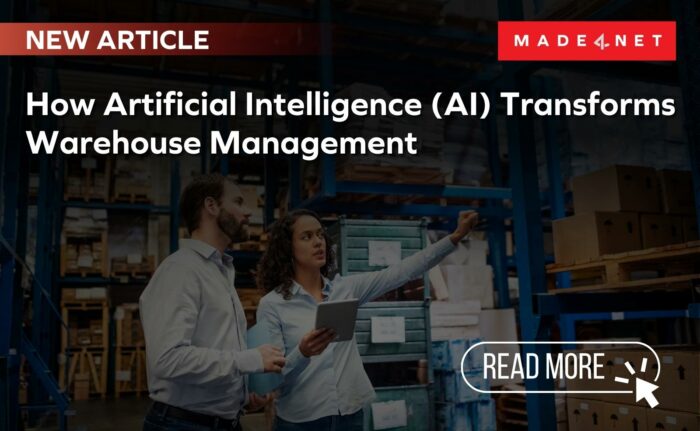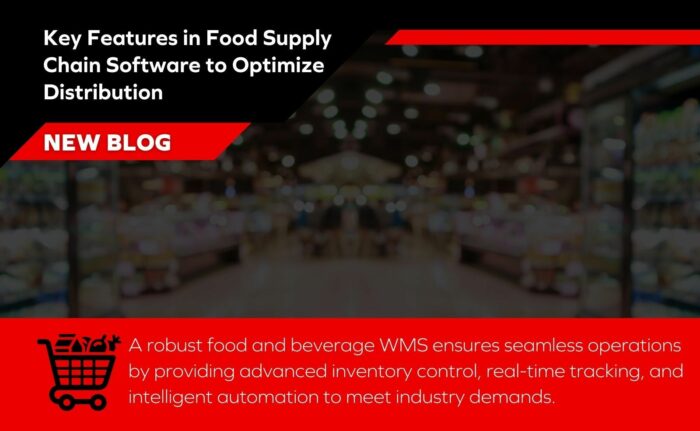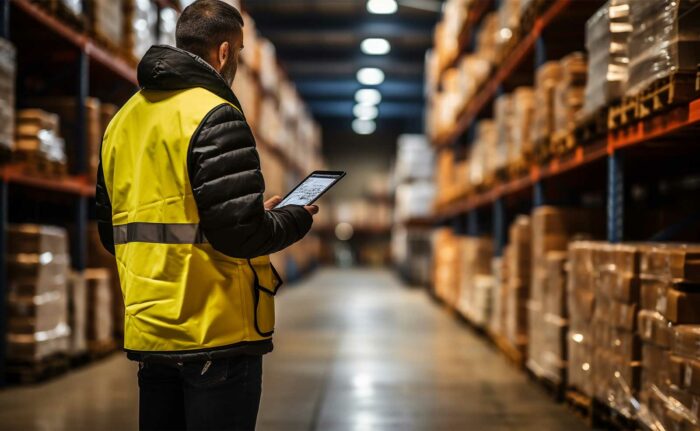
E-commerce is booming, and experts predict there will be no slowing down. In fact, e-commerce sales were expected to cross the $1 trillion mark for the first time ever in 2022—a milestone that was originally set for 2024. With this continued growth comes the need for shippers to employ 3PL order fulfillment strategies (like leveraging world-class 3PL warehouse management software) that not only allow them to keep up but empower them to excel.
In our latest ASK THE EXPERTS WHITE PAPER, “How Can Today’s Third-party Logistics (3PL) Providers Capitalize on the E-commerce Boom?”, we asked six supply chain industry experts for their advice on providing effective, efficient 3PL order fulfillment. Download the White Paper here, or read below for our main takeaways.
In this article, we’ll cover:
- What is a 3PL?
- Benefits of Using a 3PL
- What Does 3PL Fulfillment Entail?
- 3PL Fulfillment Best Practices
What is a 3PL?
A 3PL helps businesses manage and optimize their supply chain by handling warehousing, inventory management, order fulfillment, transportation, and logistics. By partnering with a 3PL provider, companies gain access to specialized expertise, advanced technology, and an established distribution network, allowing them to improve efficiency, scale operations, and enhance customer satisfaction without the overhead of managing these logistics in-house.
Why Use a 3PL? Benefits of Using Third-party Logistics
Anyone shipping anything today has a variety of key performance indicators (KPIs) to hit when it comes to 3PL fulfillment, the most important ones being:
- On-time in-full (OTIF)
- Order accuracy
- Days to delivery
- Returns turnaround time
- Next-day shipping
When you add in the complexities that manufacturers have with creating and developing quality items, or the challenges a brick-and-mortar store faces taking sales online, fulfillment becomes an even tougher nut to crack. This is where third-party logistics (3PL) providers come in.
What Does 3PL Fulfillment Entail?
The 3PL fulfillment process involves selecting items from inventory, preparing them for shipment, and handing off those items for transport to their next or final destination. Here’s how the 3PL fulfillment process typically unfolds:
- Order Receipt: Orders are received from sales channels and entered into the system.
- Picking: Warehouse staff locate and retrieve the items from inventory, guided by software that suggests the most efficient route.
- Packing: Retrieved items are packed securely using recommended materials and box sizes.
- Shipping: Packages are labeled and shipped via integrated carrier services, with tracking updates sent to the customer.
This process, when managed with software, is significantly faster and more accurate than manual methods.
3PL Fulfillment Best Practices
According to Logistics Management, more and more companies are exploring the 3PL route, “for help meeting changing customer expectations and dealing with the supply chain disruption, labor constraints, transportation woes, inflation and other challenges that have become the “new normal” in today’s operating environment.”
So, what can today’s 3PL providers do to make sure they are prepared to service growing demand?
3PL Fulfillment Best Practice #1: Embrace Change
One of the biggest changes in the last 10 years has to do with order profiles and the movement of goods. There are far more orders with fewer items in each, which changes how everything is managed within the distribution center.
To keep up, our experts suggest 3PLs take the time to audit their physical space to ensure it’s working for them, not against them. Investigate every aspect of the warehouse, from layout, racking, and shelving to what technology is being used, like pick-to-light or voice-picking. Once the appropriate layout is chosen, 3PLs can then look into the best technology for their specific needs.
3PL Fulfillment Best Practice #2: Implement the right technology
Every business is different, which means not every tech offering out there is the right fit for your operation. It’s important to choose a 3PL Warehouse Management System (WMS) that is built for 3PL fulfillment needs. Using a single WMS versus multiple systems across all customers and/or sites is recommended. Trying to work with multiple solutions presents challenges with different versions, varying interfaces, and disparate methods of communication.
When looking for the right WMS, our experts indicate the following six features are critical.
- Order management – You want a WMS that allows you to intelligently aggregate multiple orders, allowing you to organize all orders that need to be shipped into smart buckets or work that are combined according to a variety of characteristics.
- Billing granularity – With rising operating costs, 3PLs need to be sure they capture every revenue opportunity with the right 3PL billing software, to easily manage whether you are charging for picking by eaches, by the case, or by the pallet.
- Value-added Service (VAS) – VAS provides 3PLs with the opportunity to offer customers a suite of services that will improve their customers’ experience while growing their own revenue, like inserting a coupon or free gift into a shipment or providing customized wrapping and light assembly.
- Returns Processing – It’s inevitable, a portion of goods purchased online will need to be returned, which means having a simplified returns process is essential. 3PLs need to be able to provide the customer with a replacement, credit, or refund, and deal with the physical goods, be it to restock and resell, or properly dispose of.
- Scale as you grow – Whether you need to expand into a new facility or add a second facility, you want a solution that accommodates that from a commercial standpoint without adding complexities down the line.
- Reliable integration – You want a WMS that can create and publish endpoints that are easy to interpret, allowing you to seamlessly integrate data directly in and out of your system. A standard approach that works across a range of customers is key.
3PL Fulfillment Best Practice #3: Don’t shy away from automation
3PLs that use automation to improve their processes are extremely attractive to e-commerce companies, as they can benefit from the technology without having to make investments in it or be experts on it. Automation can be used effectively in a variety of ways, like cartonization, goods-to-person, pick-to-light, and more.
3PL Fulfillment Best Practice #4: Empower your workforce
With the ongoing labor shortage, it’s important to do what you can to retain employees for the long haul. One way to do so is to invest in user-friendly systems that not only make your operation run more efficiently, but that allow your operation to run smoothly with a lightly trained staff. A Labor Management System (LMS) can help with that. You can also improve retention by offering performance bonuses, quality working conditions, flexible schedules, and non-traditional benefits.
Give It A Second Thought
One thing is for certain, you want to make sure your investments align with both your short and long-term goals, so careful research is essential. Performing a detailed ROI analysis to compare proposed improvements versus the current state is key. Most importantly, you want to make sure when making changes to your operation that you keep your current customers in mind and communicate with them often. For more details on what our industry experts have to say about 3PLs and the e-commerce boom, download our White Paper today. If you’re looking for help choosing the right supply chain solution, we’ve got your back, give us a ring.


